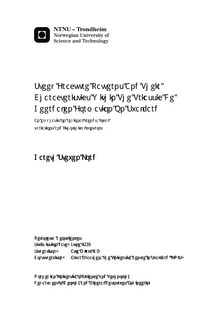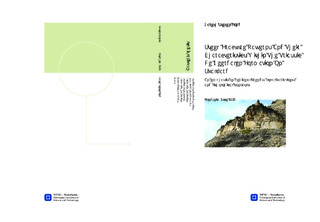| dc.contributor.advisor | Mørk, Atle | nb_NO |
| dc.contributor.advisor | Braathen, Alvar | nb_NO |
| dc.contributor.author | Lord, Gareth Steven | nb_NO |
| dc.date.accessioned | 2014-12-19T11:56:13Z | |
| dc.date.available | 2014-12-19T11:56:13Z | |
| dc.date.created | 2013-10-19 | nb_NO |
| dc.date.issued | 2013 | nb_NO |
| dc.identifier | 657463 | nb_NO |
| dc.identifier | ntnudaim:9439 | nb_NO |
| dc.identifier.uri | http://hdl.handle.net/11250/236181 | |
| dc.description.abstract | This study documents and discusses the nature of steep fracture orientations, their densities and their relationships to lithological types, which has been observed within the Triassic De Geerdalen Formation on Svalbard. The study is based entirely on field data collected over a period of two field seasons in Central Spitsbergen, Western Edgeøya and Central and Northern Hopen, with the intent of understanding the regional variations in these fractures.Fracture orientations have been analysed on a regional scale and their mode of formation is related to significant regional tectonic trends and also local structural styles. Density data and fracture characteristics within differing lithologies are based on scan-line data recorded in the field at numerous locations. The average fracture spacing and average fractures per metre has been the primary components of this discussion; and these are related to regional stratigraphic trends seen within the De Geerdalen Formation and the nature of sedimentological variations within the unit.It has been observed that throughout Svalbard there is a prominent affinity of steep fracturing to a NNW-SSE and ENE-WSW trend, with a further fracture set of NNE-SSW being observed on the island of Hopen. NNW-SSE trending fractures have been related to periods of extension along major N-S trending structural lineaments during the late-Mesozoic, with subsequent augmentation by Cenozoic compressional tectonics, uplift and unloading. ENE-WSW trending fractures seen throughout Svalbard are related to Late-Cretaceous and Palaeogene compressional tectonics along the West-Spitsbergen margin. Where they are deduced to have formed normal to the maximum stress of this compression, again these are suggested to have been augmented by later periods of uplift and unloading. Extensional fracturing seen on the Island of Hopen which is in contrast to the regional styles of Central Spitsbergen and Western Edgeøya, has been seen to be in close orientation to offshore faulting to the east of Svalbard in the Northern Barents Sea.Fracture densities are observed to show clear increases in spacing and decreases in average fractures per metre as bed thickness observed with sandstone beds. Results from sandstone and shale beds suggest a similar trend but with discrepancies at Hopen, whilst shale dominated beds show a good trend of density decreasing with bed thickness, but this lithological type is under-represented within the dataset. | nb_NO |
| dc.language | eng | nb_NO |
| dc.publisher | Institutt for geologi og bergteknikk | nb_NO |
| dc.title | Steep Fracture Patterns And Their Characteristics Within The Triassic De Geerdalen Formation On Svalbard: An emphasis on regional trends, local variations and lithological controls | nb_NO |
| dc.type | Master thesis | nb_NO |
| dc.source.pagenumber | 204 | nb_NO |
| dc.contributor.department | Norges teknisk-naturvitenskapelige universitet, Fakultet for ingeniørvitenskap og teknologi, Institutt for geologi og bergteknikk | nb_NO |

